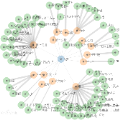In recent years, there has been a resurgence in methods that use distributed (neural) representations to represent and reason about semantic knowledge for robotics applications. However, while robots often observe previously unknown concepts, these representations typically assume that all concepts are known a priori, and incorporating new information requires all concepts to be learned afresh. Our work relaxes this limiting assumption of existing representations and tackles the incremental knowledge graph embedding problem by leveraging the principles of a range of continual learning methods. Through an experimental evaluation with several knowledge graphs and embedding representations, we provide insights about trade-offs for practitioners to match a semantics-driven robotics applications to a suitable continual knowledge graph embedding method.
翻译:近年来,在使用分布式(神经)表示法来代表机器人应用的语义学知识并解释其原因的方法方面,出现了复苏,然而,虽然机器人经常观察以前未知的概念,但这些表示法通常假定所有概念都是先入为主的,纳入新信息需要重新学习所有概念。我们的工作放松了对现有表述的这种有限假设,并通过利用一系列持续学习方法的原则解决知识图的递增问题。我们通过实验性评价,用若干知识图和嵌入式表示法,就实践者将语义学驱动的机器人应用与适当的持续知识图嵌入法相匹配的权衡提供了见解。
相关内容
Source: Apple - iOS 8




